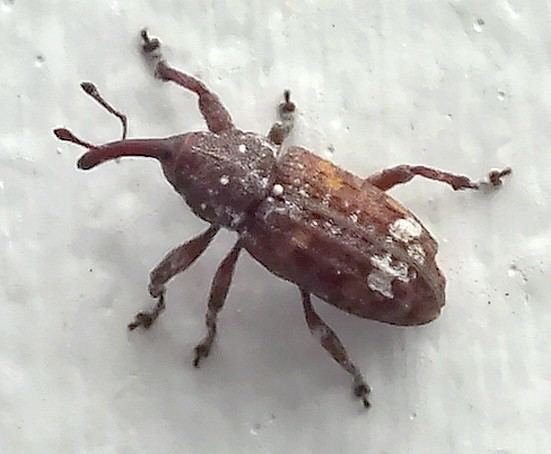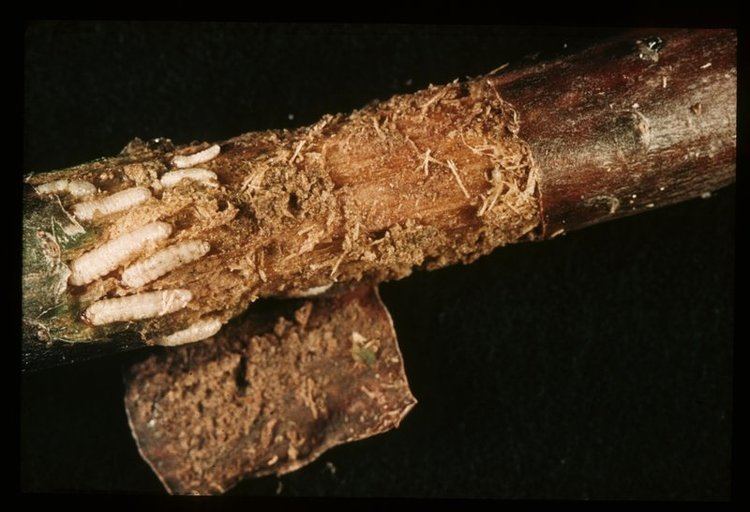Rank Species | Order Coleoptera | |
Similar Pissodes, Hylobius abietis, Gall adelgid, Cronartium ribicola, Adelgidae | ||
Pissodes strobi, known as the white pine weevil or Engelmann spruce weevil, is the primary weevil attacking and destroying white pines. It was described in 1817 by William Dandridge Peck, professor of natural history and botany at Harvard University. The weevil is dark brown with white spots.

The eggs are laid inside a tree, usually white pine, Sitka spruce, white spruce, Engelmann spruce, or other pine or spruce, and the offspring feed on this tree until the host is killed.

Damage to white spruce

Severe damage to white spruce by the white pine weevil (Pissodes strobi Peck) in 15-year-old plantations provided an opportunity to study the heritability of weevil resistance (Kiss 1989). Weevil resistance appeared to be highly heritable (h2i = 0.18; h2f = 0.77), and families selected for seed orchards and future breeding seemed to have greater resistance to weevil attack than those of less vigorous families.

Induced (traumatic) resin in white spruce leaders resistant or susceptible to the white pine weevil was analyzed for volatile terpenes and diterpene resin acids after simulated white pine weevil damage (Tomlin et al. 2000). Leaders from 331 trees were wounded just below the apical bud with a 1-mm diameter drill, coinciding with the natural time of weevil oviposition in the spring. Leaders were removed in the autumn, and the bark and xylem from the upper and lower regions of the leader extracted and analyzed by gas chromatography. Unwounded trees had low amounts of resin in xylem compared with bark. In response to wounding, volatile terpenes and diterpene resin acids increased in the upper xylem (area of wounding), with resistant trees showing a greater increase than susceptible trees. Wounding caused monoterpenes in particular to decrease in the lower region of the leader (away from the drilled area) in greater amounts in susceptible trees than in resistant trees. In response to wounding, the proportion of monoterpene to resin acid increased in the upper and lower xylem of resistant trees, and slightly increased in the upper xylem of susceptible trees. Monoterpene-enriched resin is more fluid than constitutive resin, and probably flows more readily into oviposition cavities and larval mines, where it may kill immature weevils. Loss of resin components in the lower xylem suggested catabolism and transport of these materials to the site of wounding; however, energetic and regulatory data are necessary to confirm this hypothesis. This study provides a basis for measuring the ability of a tree to undergo traumatic resinosis, which could be used to screen for resistance to white pine weevil.

